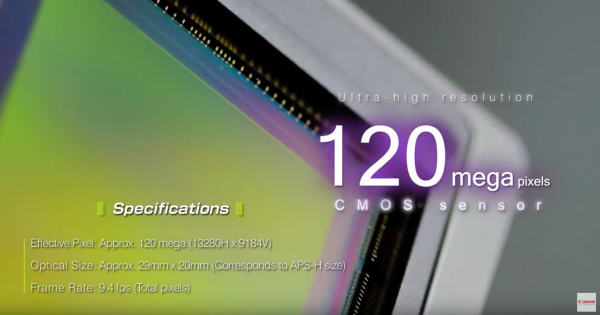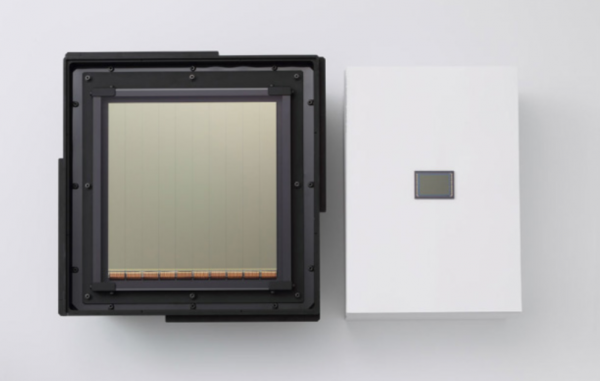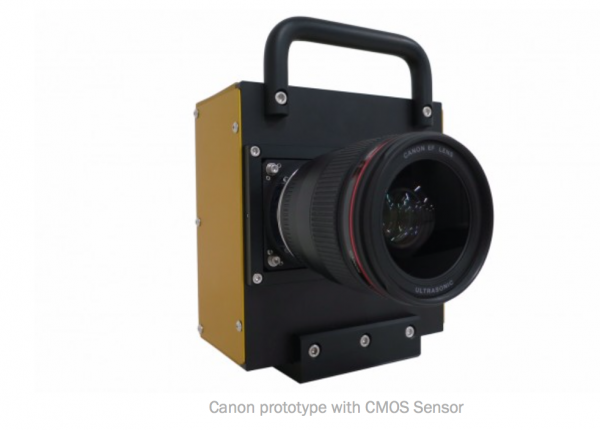Canon has released some video footage taken with their 120MXS (120MP) ultra-high resolution CMOS sensor. The sensor has 13280 x 9184 effective pixels, which gives it approximately 60x the resolution of Full HD.

The sensor is not full frame but smaller, approximately the equivalent size to an APS-H (29.22mm x 20.20mm) sensor. It has a square pixel arrangement of 2.2µm x 2.2µm with 122 million effective pixels. With CMOS sensors, a high-speed readout for high pixel counts is achieved through parallel processing, an increase in parallel-processing signal counts can result in such problems as signal delays and minor deviations in timing. By modifying the method employed to control the readout circuit timing, Canon successfully achieved the high-speed readout of sensor signals. As a result, the new CMOS sensor only has a maximum output speed of approximately 9.5 frames per second, for continuous shooting of ultra-high-resolution images.

The sensor can output Full HD video from any approximately 1/60th-sized section of its total surface area. Images captured with the 120MXS CMOS image sensor, even when they are cropped or digitally magnified, are able to maintain higher levels of definition and clarity. With it only currently being able to capture 9.5 frames per second, it’s more suited for surveillance applications and is not suitable for filmmaking. But who knows, maybe in a few years from now the technology will improve to the point where a sensor of this size could replace a zoom lens for some applications.
The sensor can be made to be either RGB or monochrome, the later has twice the sensitivity according to Canon.

* In 2010
120MXS Specifications:
• Sensor size: APS-H (29.22mm x 20.20mm)
• 120MXSC: RGB
• 120MXSM: Monochrome
• Number of effective pixels: 13280h x 9184v, approx. 122MP
• Pixel size: 2.2μm x 2.2μm
• Progressive Scan
• Rolling Shutter
• 188pin ceramic PGA
• Sensitivity:
• 120MXSC (Green): 10,000e/lux/sec
• 120MXSM: 20,000e/lux/sec
• Saturation: 10,000e @ gain0.5x
• Output Channels: Data 28 lanes, Clock 14 lanes
• Dark Random Noise: 2.3e rms @ gain x8, Room Temp.
• Dark Current: 8.1e/sec @ gain x8, 60°C
• Number of output channels: Data 28 lanes, Clock 14 lanes
• Main clock frequency: 45MHz (Recommended)
• Output format: 720Mbps in LVDS output 9.4fps @ 10 bit
• Built in column amplifier (Pre-amplifier gain mode: x0.5, x1, x2, x4, x8)
• Serial communication
• All pixel progressive scan reading function, Region of Interest (ROI) reading function (Vertically) • Vertically intermittent reading function (1/1, 1/2, 1/3, 1/5, 1/7, 1/15)
• Power consumption: 2.5W (under recommended operating conditions)
• Power supply voltage: 1.7 V, 3.5 V
• Package size: 55.0mm x 47.8mm x 4.49mm

Before you get carried away, the 120MP sensor is not new and was originally announced by Canon way back in 2010. In 2010 Canon also announced the world’s largest CMOS image sensor (at the time), with a chip size measuring 202x205mm. Because of the sensors huge physical size, Canon claimed it was capable of capturing images in one one-hundredth the amount of light required by a professional DSLR camera. At 202x205mm, it is approximately 40 times the size of Canon’s 21.1-megapixel full-frame CMOS sensor that’s in the Canon EOS-1Ds Mark III and EOS 5D Mark II.

In 2015 they went even further and announced a 250MP APS-H CMOS sensor. That sensor packs 19,580 x 12,600 pixels on its 29.2 x 20.2-millimetre surface, offering a pixel density of 418,000 pixels per square millimetre. That sensor had almost four times the number of pixels as the 50.6 MP full-frame Canon EOS 5DS. According to Canon, when they installed the sensor in a camera it was able to distinguish the lettering on the side of an aeroplane flying at a distance of approximately 18 km from the shooting location. The size of a 250MP RAW stills image would be somewhere in the region of 300MB. With 30x the resolution of 4K, it is scary to think how big the video files from any camera that had this sensor would be.
This new technology may still be a long way off finding its way into any type of commercially available camera. There are still several obstacles to overcome when using such a high MP sensor. According to Canon; with CMOS sensors, increases in pixel counts result in increased signal volume, which can cause such problems as signal delays and slight discrepancies in timing. The new Canon-developed CMOS sensor, however, despite its exceptionally high pixel count, achieves an ultra-high signal readout speed of 1.25 billion pixels per second, made possible through such advancements as circuit miniaturization and enhanced signal-processing technology. Accordingly, the sensor enables the capture of ultra-high-pixel-count video at a speed of five frames per second. Additionally, despite the exceptionally high pixel count, Canon applied its sensor technologies cultivated over many years to realize an architecture adapted for miniaturized pixels that deliver high-sensitivity, low-noise imaging performance.
Canon is still considering the applications where this technology could be used. While they say sensors like these are more destined to be used in specialized surveillance and crime prevention tools, ultra-high-resolution measuring instruments and other industrial equipment, they have said it could also be used in the field of visual expression.
Eight years later and none of these sensors are commercially available or found in any of Canon’s products. Technology doesn’t always move at a lightning pace.





